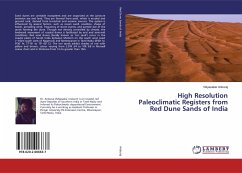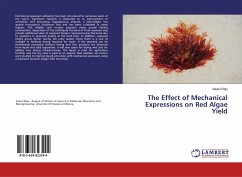Sand dunes are unstable ecosystems and are organized at the juncture between sea and land. They are formed from sand, which is eroded and ground rock, derived from terrestrial and oceanic sources. This system is influenced by several factors, such as ocean swell, coastline, shape of beach, prevailing wind, frequency of storm events, and particle size of the sands forming the dune. Though not directly controlled by climate, the landward movement of coastal dunes is facilitated by arid and semi-arid conditions. Red sand dunes (locally known as 'teri sand') occur in the coastal plains of South India between Muttom on the south west coast (~16km south west of Nagercoil) and Rameswaram in Tamil Nadu (8°00' to 9°30' N; 77°18' to 79° 00' E). The teri sands exhibit shades of red with yellow and brown, colour varying from 2.5YR 3/4 to 10R 3/6 in Munsell colour chart and in thickness from 1m to greater than 10m.








